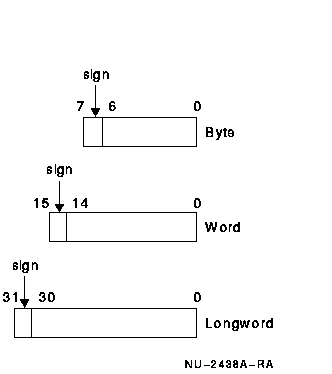The attributes FIXED and BINARY are used to declare integer variables and fractional variables in which the number of fractional digits is fixed (that is, nonfloating-point numbers). The BINARY attribute is implied by FIXED.
For example, a fixed-point binary variable can be declared as:
DECLARE X FIXED BINARY(31,0);
|
The variable X is given the attributes FIXED, BINARY, and (31,0) in this declaration. The precision is 31. The scale factor is 0, so the number is an integer.
There is no representation in PL/I for a fixed-point binary constant. Instead, integer constants are represented as fixed decimal. However, fixed decimal integer constants (and variables) are converted to fixed binary when combined with fixed binary variables in expressions. For example:
In this example, if I is a fixed binary variable, the integer 3 is represented as fixed decimal; however, PL/I converts it to fixed binary when evaluating the expression.
Fixed binary variables have a maximum precision of 31, and therefore fixed binary integers can have values only in the range -2,147,483,648 through 2,147,483,647. An attempt to calculate a binary integer outside this range, in a context that requires an integer value, signals the FIXEDOVERFLOW condition.
The attributes FIXED BINARY are used to declare binary data in PL/I. The BINARY attribute is implied by FIXED. The format of a declaration of a single, fixed-point, binary variable is:
DECLARE identifier FIXED [BINARY] [(precision[,scale-factor])];
|
There is no form for a fixed-point binary constant, although constants of other computational types are convertible to fixed-point binary. A fixed-point binary variable usually receives given values by being assigned to an expression of another computational type or another fixed-point binary variable.


